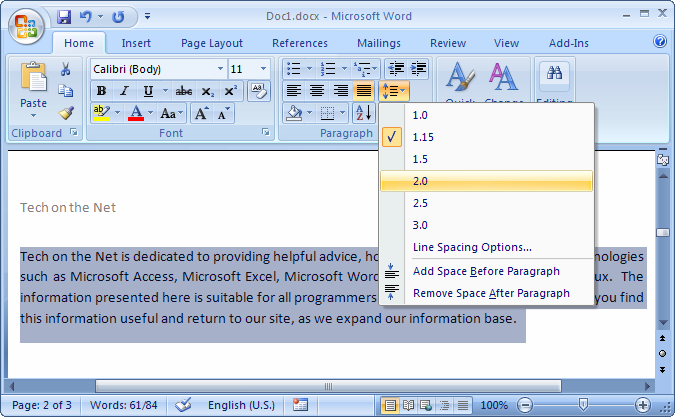
- PARAGRAPH DIALOUGIE BOX WORD ON APPLE MAC VERSION OF
- PARAGRAPH DIALOUGIE BOX WORD ON APPLE HOW TO GET RID
Paragraph Dialougie Box Word On Apple Mac Version Of
In the Hyphenation Options dialog box , enter a value into the first Hyphenate. The line numbering can be stopped at any time or suspended for selected paragraphs via Line Numbering Suppress for Current Paragraph or Paragraph dialog Line and Page. The Mac version of Word 2011 doesn't seem to have the paragraph numbering feature where there more than 1 leading zeros (e.g., '0001' instead of '01').
With the cursor in a paragraph, you can use a formatting command to format the paragraph. This is not the only three characters that result in this type of replacement—characters for lines—but if you don't know the source of the line, it can be frustrating.You can apply formatting a paragraph: 1. For instance, if you type three underlines on a new line, and then press Enter, you get a solid line that extends the width of your document. One such liberty is the adding of borders to paragraphs based on what you type. Word, by default, takes some liberties with what you type.

(In Word 2007 click the Office button and then click Word Options. Display the Word Options dialog box. To open the Fonts dialog box, select Window > Show Fonts. In LayOut for Mac OS X, you find paragraph formatting options along the bottom of the Fonts dialog box, as well as on the Text menu.
Make sure the AutoFormat As You Type tab is selected. Word displays the AutoCorrect dialog box. Click on AutoCorrect Options. Click Proofing at the left side of the dialog box.
Paragraph Dialougie Box Word On Apple How To Get Rid
Close the various dialog boxes that are open.Now that you know what causes the lines, you may be wondering how to get rid of them once they are in your document.As with any AutoFormat that is applied by Word, you can undo the change by pressing Ctrl+Z right after the change is made. Set the checkbox as desired. If cleared, Word does not automatically create lines if it is selected, Word will behave as described earlier in this tip. Note the Border Lines checkbox.
(How you do this is covered in other WordTips.)Now you are ready to get rid of the lines. Second, you need to display Word's non-printing characters. First, remember that the "line" added by Word is really a paragraph border it is not a real line. You can undo this by immediately pressing Ctrl+Z.If you later want to delete the line, there are two things you can do that will help you.
Word converts them to a border underneath the paragraph. On a blank line, enter three underlines and press Enter. For instance, consider the following scenario, which you can try in a document: If this does not do what you want, you can always select the entire paragraph that contains the border and simply delete it.There is something else to remember when getting rid of borders created by AutoFormat: They can affect multiple paragraphs. This resets the paragraph's formatting back to its default, which usually does not include the border.
When you pressed Enter twice, in step 3, you ended up with three paragraphs, each formatted with a border underneath. Since the "line" is really a paragraph border, it appears at the bottom of the last paragraph that has that format. The underline appears to not go away, but jumps up a line.Why did this happen? The reason is quite simple. It appears as if you have moved the underline down two lines, since the insertion point is still at the beginning of the paragraph that has the underline. This should place the insertion point at the beginning of the paragraph that now has the underline.
Select all the paragraphs in your document by pressing Ctrl+A. If you don't want to do this (perhaps you don't want to remove some other explicit paragraph formatting you have), you can follow these steps: All that really happened was that Word dutifully displayed the bottom border on the last paragraph with that format, which now happens to be the second of the original three paragraphs.To get rid of the border on all the paragraphs, you need to select all the paragraphs and press Ctrl+Q. Thus, the border appeared to "jump up" a line. (Word translates the border as one that appears under the group of like-formatted paragraphs, not one that appears under each individual paragraph.) When you performed step 4, the border was removed from the last of the three paragraphs, but it still remained on the other two.
If there are some borders you really want to keep, then you should simply modify step 1 so that you select only those paragraphs that have borders you want to get rid of. The Borders tab of the Borders and Shading dialog box.These steps remove all borders from all paragraphs and tables within the document. Make sure the Borders tab is selected. Word displays the Borders and Shading dialog box.


 0 kommentar(er)
0 kommentar(er)
